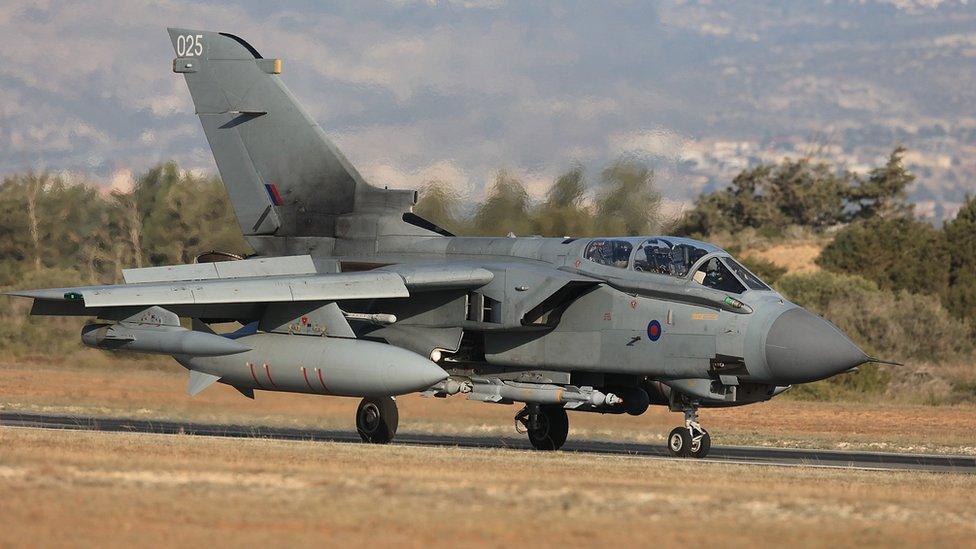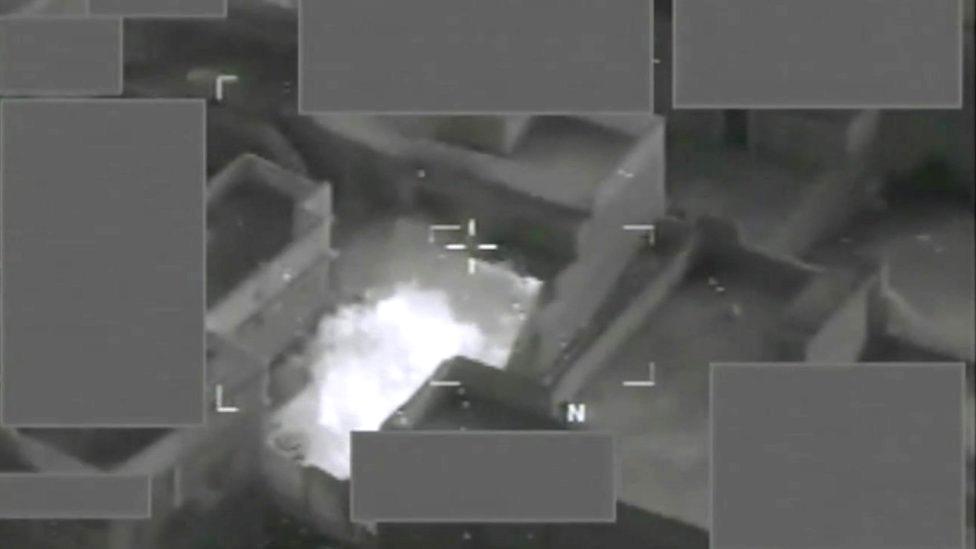UK airstrikes on IS may have killed 26 civilians, charity says
- Published

RAF Tornado jets were involved in the campaign against the Islamic State group
UK airstrikes in Iraq and Syria may have killed at least 26 civilians, research by a charity suggests.
Action on Armed Violence says it has found evidence that at least nine RAF strikes resulted in civilian deaths between March 2016 and March 2018.
A Ministry of Defence admission that it caused one civilian death in its seven-year campaign against the Islamic State group was not now credible, it added.
The MoD said "no evidence" of civilian deaths had been found in the strikes.
A spokesman said military personnel examine all available evidence, including mission data from every strike.
The analysis of UK strikes was carried out by AOAV, which researches the impact of global conflicts. The BBC has not independently verified AOAV's findings.
Based on its own research, the charity says at least 26 civilians are likely to have been killed in UK strikes in the two-year period between March 2016 and March 2018, while up to 32 civilians may have actually been killed.
Credible reports
Most of the strikes that resulted in civilian deaths were "self-reported", meaning military personnel within the US-led coalition highlighted concerns civilians might have been killed following strikes.
Reports of civilian deaths were deemed "credible" in all but one of the nine strikes examined - with civilian casualties believed "likely" or 'highly likely".
AOAV analysed MoD strike reports released after each incident, and cross-checked them with information provided by US Central Command and research by other charities, as well as reports from the ground and from media organisations, including the BBC.
One credible report of civilian deaths took place on 19 May 2017, in the Iraqi city of Mosul. The RAF said Tornado jets engaged seven IS targets there that day. The incident was self-reported.
The New York Times obtained a copy of the US coalition report, which stated that three civilians were near one target location. It said: "The explosion from striking the mortar site was large enough to conclude that any person in the blast radius was seriously injured or killed in the strike."
The RAF has never accepted that civilian casualties were caused by its strike.
Cockpit footage
AOAV's analysis also includes civilian casualties likely caused by RAF strikes that have already been identified by another charity, AirWars. One, in Raqqa, Syria, in August 2017 is reported to have resulted in 12 civilian deaths.
A BBC investigation into a RAF strike in Mosul, on 9 January 2017, is also recorded. Two civilians were reported to have been killed when a truck bomb was targeted.
The MoD still does not accept that any civilians were killed, even though the coalition now says those reports of civilian deaths were "credible".
In May 2018, the MoD admitted to "unintentionally" causing one civilian death when a motorcyclist was killed while crossing the path of a missile fired by a Reaper drone targeting insurgents.
Definitive proof of civilian casualties is hard to establish. The US-led coalition did not have teams on the ground to verify reports of civilian deaths during the campaign. Most analysis was conducted by reviewing video from the cockpit of the aircraft involved.
The US military estimates that 1,437 civilians may have been killed in the bombing campaign against IS between August 2014 and May 2022.
In a statement, the MOD said it has "identified nothing to indicate that such civilian casualties were caused in Syria". "The RAF always minimises the risk of civilian casualties through our rigorous targeting processes… but no evidence has been identified in these instances."
- Published16 March 2020

- Published1 May 2018
